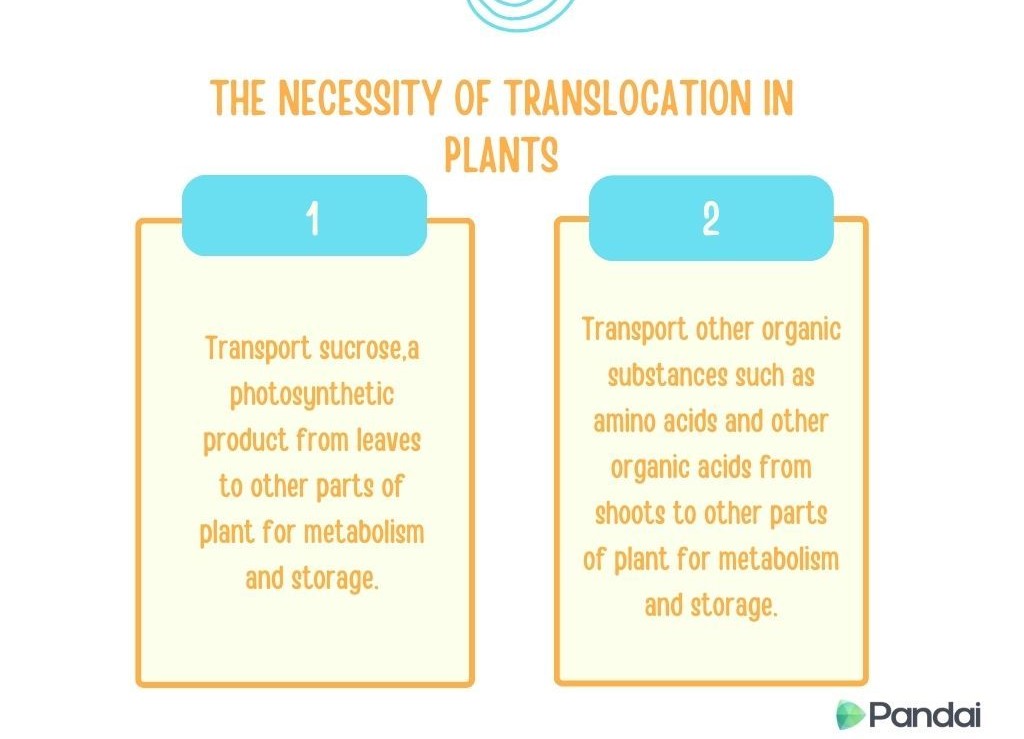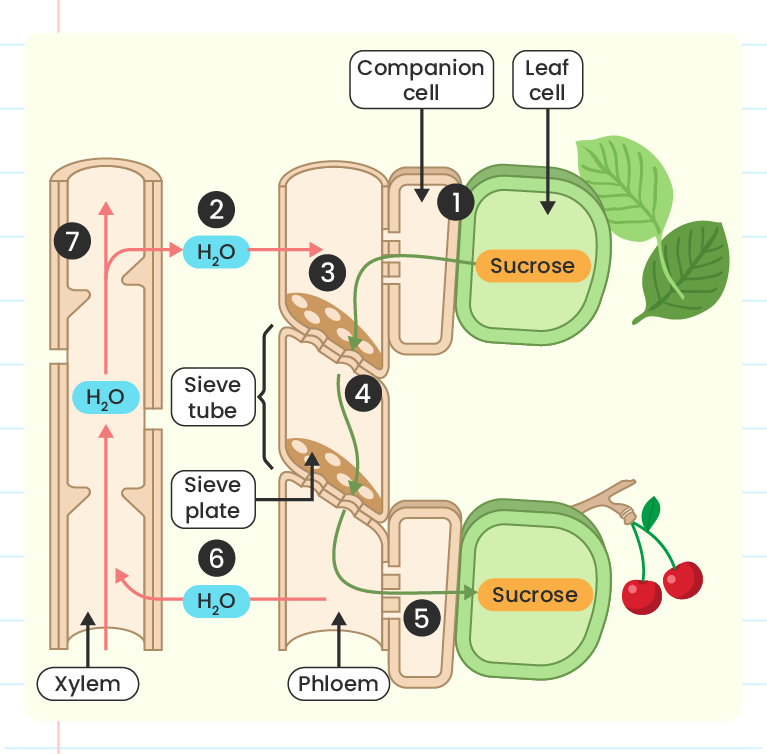| |
|
|
| |
| Definition of Translocation |
| A process of transporting organic substances such as sucrose, amino acids and hormones in the phloem from the leaves to other parts of the plant such as the roots and stem. |
|
| |
 |
| |
| Pathways of Translocation in Plants |
Explaination |
|

|
- Sucrose is actively transported into the sieve tube.
- The transport of sucrose into the sieve tube through the companion cell from the leaf cells reduces the water potential in the sieve tube. This causes water to diffuse from the xylem into the sieve tube via osmosis.
- The water diffusion increases the hydrostatic pressure in the sieve tube.
- The increase in the hydrostatic pressure causes the phloem sap to be pushed along the sieve tube to other organs of the plant.
- The phloem sap (sucrose) is transported from the sieve tube to other parts such as stems, roots, shoots, fruits and tubers by active transport.
- The high water potential in the phloem causes the water to diffuse in order for it to return into the xylem by osmosis.
- Transpiration pulls water along the xylem vessel against the direction of gravitational pull.
|
|
| |
| Mesophyll Cells have Chloroplast and Carry Out Photosynthesis |
- Photosynthetic products are transported actively into sieve tube by companion cell.
- The accumulation organic substances in phloem increases the concentration gradient,then water diffuses from surrounding into phloem.
- Hydrostatic pressure generated transports organic substances to other parts.
- At other parts of plant such as root,the organic substances in phloem are transported actively into root cell for metabolism and storage.
|
|
| |